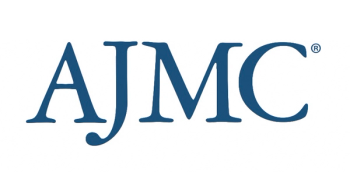
- February 2022
- Volume 28
- Issue 2
- Pages: SP81-SP82
ASTRO Offers Guidance on EBRT for Primary Liver Cancers
The American Society for Radiation Oncology (ASTRO) has released a guideline on the use of radiation therapy to treat adult patients with primary liver cancers using external beam radiation therapy (EBRT). Evidence-based recommendations in the guideline outline indications and optimal EBRT dosing, techniques, and treatment planning for patients with hepatocellular carcinoma (HCC) and intrahepatic cholangiocarcinoma (IHC), with a strong emphasis on multidisciplinary care. EBRT aims high doses of targeted radiation at tumor sites from outside the body with noninvasive techniques and, in some cases, has been underutilized in treatment where it could be effective.
The EBRT guideline, ASTRO’s first for primary liver cancers, was published in the January issue of Practical Radiation Oncology.1 It was based on a systemic literature review of articles published from January 2000 through February 2020.
Primary liver cancers are among the most commonly diagnosed types of cancer and the fourth leading cause of cancer death worldwide. Incidence rates in the United States have more than tripled since 1980, rising approximately 2% each year in the past 2 decades, according to the American Cancer Society. An estimated 42,230 new cases were diagnosed last year.2 Mortality rates from HCC and IHC also continue to rise, despite the growing availability of screening for HCC and improved prevention and treatment of diseases that lead to liver cancer (ie, hepatitis B, hepatitis C, nonalcoholic fatty liver disease).
“Patients diagnosed with liver cancer often have a number of treatment options available to them, and they should be presented with each of them before a treatment course is decided. The different disciplines—hepatology, surgical oncology, interventional radiology, and radiation oncology—should all be involved in multidisciplinary treatment discussions to determine what might be best for each patient,” said Smith Apisarnthanarax, MD, vice chair of the guideline task force, medical director of the Seattle Cancer Care Alliance, and professor of radiation oncology at the University of Washington in Seattle. “We feel this guideline is an important milestone in the management of primary liver cancers, as we hope to provide practitioners and the public with a systematic and evidence-based foundation of where EBRT might fit into the overall complex picture of treating these challenging cases.”
Patients with liver cancer typically have multiple comorbidities, which can complicate diagnosis, staging, and treatment decision-making. Among the key considerations is whether a patient has underlying cirrhosis, which is present in approximately 90% of patients with HCC.
For patients whose primary HCC is confined to the liver, treatment options can include a liver transplant, tumor removal through surgery, thermal ablation, and catheter-based therapies. If cancer is advanced, patients and clinicians can consider systemic therapy, including targeted therapy and/or immunotherapy. For IHC, standard treatment includes a combination of surgery and chemotherapy with or without radiation. A study presented at the 2021 ASTRO Annual Meeting found that just 4% of eligible patients received EBRT as a bridging therapy before liver transplant.3
“Historically, low utilization rates for external beam radiation were due to technological limitations that made it challenging to avoid healthy liver tissue. However, with significant advances in imaging and radiation treatment delivery over the past 15 years and improved understanding of how the liver responds to radiation, we now have an increasing amount of clinical data on the role that EBRT can play for patients with these diseases,” said Higinia Cardenes, MD, PhD, chair of the guideline task force and a professor of clinical radiation oncology at Weill Cornell Medicine in New York, New York.
Recommendations cover patient selection, planning and delivery techniques for EBRT in various clinical situations, and palliative treatment settings. Key recommendations include the following: EBRT is strongly recommended in the following circumstances:
• A potential first-line treatment for patients with HCC confined to the liver who are not candidates for curative therapy.
• A consolidative therapy for patients with incomplete responses to other liver-directed treatments.
• A salvage therapy option for patients with local recurrences after other treatment.
In addition, EBRT is conditionally recommended in the following circumstances:
• For patients with multifocal or unresectable HCC confined to the liver.
• For patients with macrovascular invasion, when sequenced with systemic or catheter-based therapies.
The guideline features treatment algorithms to manage HCC contained in liver and for HCC with macrovascular invasion:
• In the palliative setting for symptomatic primary HCC and/or HCC that has invaded a blood vessel.
• As a bridging therapy prior to liver transplant or before surgery in select patients.
Other recommendations include the following:
• EBRT should be considered for patients with unresectable IHC, with or without chemotherapy, typically after systemic therapy. For patients with resected IHC and high-risk features, adjuvant EBRT is conditionally recommended. Treatment algorithms are provided.
• The guideline addresses optimal dosing, fractionation, treatment planning and delivery techniques, and calls for individualized care that considers the location of the tumor and how advanced the cancer is, as well as liver function.
REFERENCE
1. Apisarnthanarax S, Barry A, Cao M, et al. External beam radiation therapy for primary liver cancers: an ASTRO clinical practice guideline. Pract Radiat Oncol. 2022;12(1):28-51. doi:10.1016/j.prro.2021.09.004
2. Key statistics about liver cancer. American Cancer Society. Updated January 12, 2022. Accessed January 17, 2022. https://www.cancer.org/cancer/liver-cancer/about/what-is-keystatistics.
html
3. External-beam radiation therapy underused for people with liver cancer awaiting transplant. News release. American Society for Radiation Oncology; October 24, 2021. Accessed January 17, 2022. https://www.astro.org/News-and-Publications/News-and-Media-Center/News-Releases/2021/External-beam-radiation-therapy-underused-for-peop
Articles in this issue
almost 4 years ago
From the Editor-in-Chief: From the Earth to the Moon (and Back)almost 4 years ago
Emory’s Winship Joins AccessHope as Collaboration Partneralmost 4 years ago
NCCN Updates Give Zanubrutinib Preference in CLL/SLLalmost 4 years ago
FCS’ Bailey Discusses 4-Drug Regimens, Use of MRD in Multiple MyelomaNewsletter
Stay ahead of policy, cost, and value—subscribe to AJMC for expert insights at the intersection of clinical care and health economics.






































